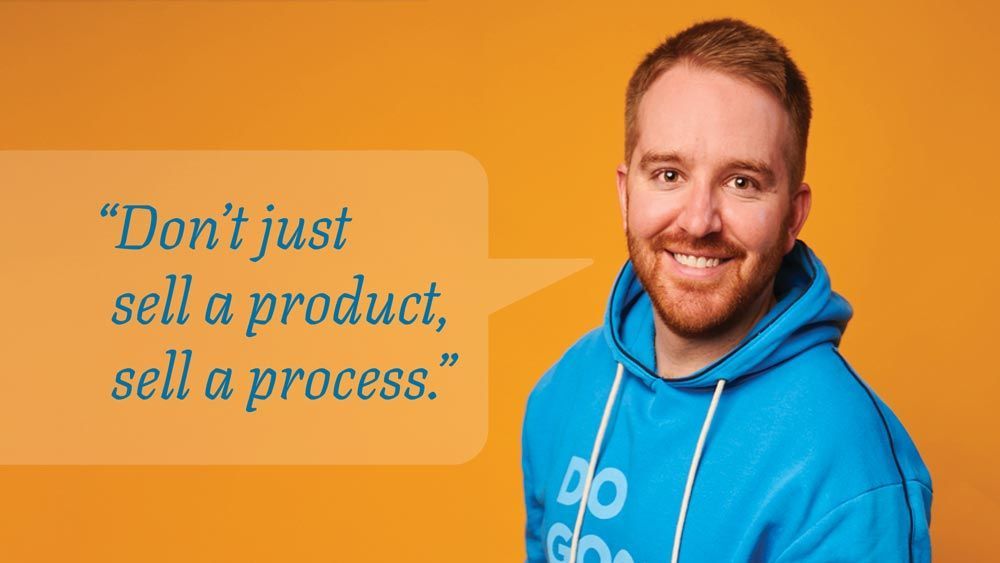The Difference between Mission, Vision, and Values
As strategists, we create clarity for service companies so they can focus on creating value and profitable solutions for people.
In the 2013 article, The Difference Between Purpose, Mission, and Vision, I defined how purpose, mission, and vision align organizations and teams to achieve impact.
It's rare to find two organizations that align on common usage, definitions, and application of the principles of purpose, mission, vision, and values. Leadership teams must understand why each principle is relevant to achieve clarity for the business and activate brand strategy for business success.
What is the Difference between Purpose, Mission, Vision, and Values Statements?
A practical exercise is substituting the words Why, What, Where, and How for Purpose, Mission, Vision, and Values.
- The company purpose is why an organization exists beyond generating a profit. Purpose helps companies stay aligned around why it matters.
- The company vision is where you or your organization are headed and what the future looks like. Vision keeps a company focused and paints a picture of success.
- The company mission is what an organization does to achieve its vision and the master plan for creating value. The mission is how a company puts its purpose and vision into action.
- Company values define how your company does business. Shared company values are guiding principles for how people show up, treat each other, and how a company succeeds.
Individuals have values; companies should have guiding principles that align people with different values around principles that form a shared culture. Corporate values are shared values. Shared values are guiding principles and beliefs that define brand character, shape company culture, and guide organizational decision-making.
What are the Roles of Mission, Vision, Values, and Purpose Statements?
- The purpose statement guides you and your team. Your purpose statement defines whom you serve, why it matters, and, most critically, why your company exists beyond generating profit. Purpose gives people a reason for showing up to work and doing great things.
- The vision statement inspires you and your team. Company vision focuses your company and its people on impact and "casts a vision" for the desired future. Without clear direction from leadership, people are not focused on the future.
- The mission statement motivates you and your team. Your mission statement activates how a company fulfills its purpose, achieves its vision, and creates value. At a minimum, a company mission declares, "We will (take action) for (category and customer) by (date). A mission statement clarifies strategy, eliminates distractions, and holds everyone accountable for measurable results.
- Shared values align you and your team. Values are guiding principles for business, shaping organizational culture, and interacting with people. Turning them into shared values aligns with brand strategy, company culture, and organizational operations. People have values; companies must promote shared values that align with the company's focus.
I owe some of that thinking to @briansooy
— David C. Baker (@davidcbaker) February 3, 2023
How Southwest Airlines Puts Purpose, Mission, and Vision into Action — and Where They Failed
Southwest Airlines seeks to align leadership and business operations with brand strategy. Since its founding in 1967, Southwest has sought to maintain an unwavering focus on its customers and commitment to how they serve them.
At least, that’s the idea. When weather causes delays or government systems fail, putting principles into practice across the enterprise is challenging when your operations, culture, and brand architecture don’t stand up to the stress of global events.
- Southwest Airlines’ purpose statement is, “We connect People to what's important in their lives through friendly, reliable, and low-cost air travel.”
- Southwest Airlines’ vision is “To become the World's Most Loved, Most Efficient, and Most Profitable Airline.”
- Southwest Airlines’ mission statement is “Dedication to the highest quality of customer service delivered with a sense of warmth, friendliness, individual pride, and Company Spirit.”
Southwest Airlines' shared values are best summarized by How I Show Up, How We Treat Each Other, We, and How Southwest Succeeds.
What Happens When a Company Fails to Fulfill its Purpose, Mission, and Vision?
Due to weather and government system failures, Southwest Airlines canceled thousands of flights, leaving tens of thousands of travelers frustrated and stranded.
There’s one timeless lesson here for every company: Values guide your culture and business strategy. Your brand purpose, mission, vision, and values are only relevant and meaningful if your culture makes them tangible and actionable and can activate them during the most challenging economic and business conditions.
Without a vision, you’ll never stay focused.
Without purpose, your brand will not align with your mission.
Purpose Leads to Impact
The distinction between purpose, mission, vision, and values is critical. Together, these statements become a body of guiding principles that guide, inspire, motivate, and align leaders and employees.
Ultimately, these four elements of brand strategy drive your organization to one outcome: impact.
Leadership can measure their organization's success and impact in different ways, such as revenue, increased profits, or improved lives. Regardless of how impact gets measured, organizational impact validates brand strategy.
Here’s my advice: don’t get hung up or bogged down trying to create a perfect mission or vision statement. Instead, focus your brand strategy on how your company shows up and treats people. People will remember how your company made them feel more than what you say or do.
Brian Sooy is the first Level C Certified Brand Strategist and StoryBrand Certified Guide. Brian leads the Aespire branding agency and authors books and thought leadership to help leaders find clarity, focus teams, align culture, build brands, multiply impact, and build thriving businesses.
Do you have a hard time explaining what your company does or why your brand matters to people?
If you struggle to grow your business, you’re not alone. Aespire can help you create a clear message and brand that helps you grow your business. Contact us today for a consultation with a StoryBrand Certified Marketing Guide.
Get a Free Comprehensive Marketing Assessment
Stop hoping your marketing will sort itself out.
- Complete this free assessment in 15 minutes.
- Review your custom report (and schedule a 30-minute review) to diagnose what’s happening.
- Create an action plan to get your marketing back on track.
Do you feel powerless because you’re competing against deep-pocketed competitors? Call today for marketing to elevate your brand, create new customers, and grow your business.
Aespire Branding
North Ridgeville, OH 44039
Phone: (440) 322-5142
Contact Aespire
Aespire is a Woman-Owned Small Business Enterprise (WBE)
Many essential services companies struggle to explain how their expertise helps customers solve problems and achieve their goals. Aespire guides leaders with brand strategy, design, and marketing so they can start, grow, and sustain high-performing teams and profitable businesses.
We're committed to helping people flourish, businesses thrive, and communities prosper.
Privacy Policy | Terms of Use | Accessibility | Privacy Settings | Site Map
As an Amazon Associate, we earn from qualifying purchases on this and other affiliate programs.
© 2025 Aespire Cleveland Ohio StoryBrand Certified Ohio Marketing
|
Brand Strategist | Built on
Aespire Websites Made Simple








